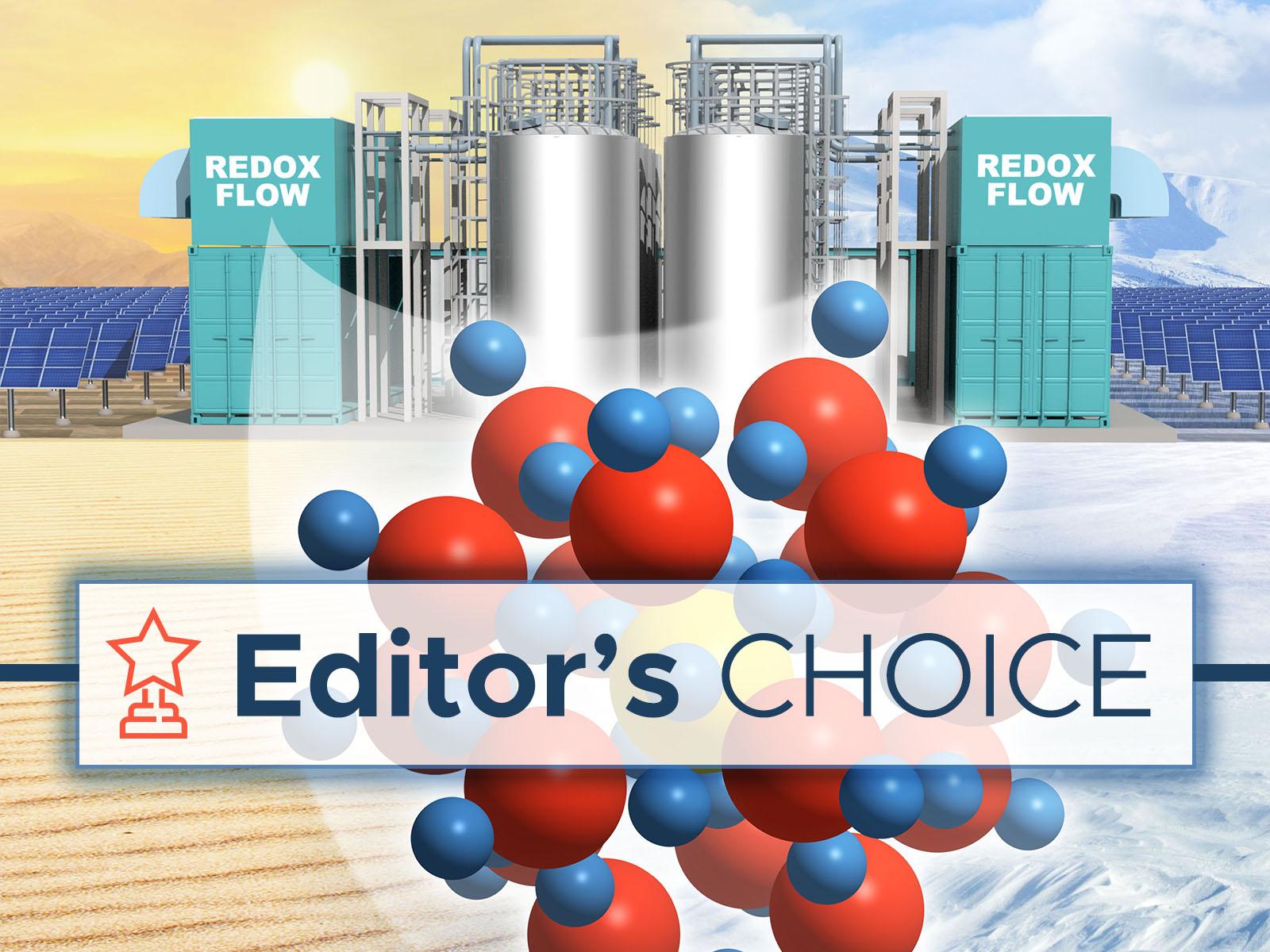Redox Flow Battery Paper Makes Editor’s Choice
Paper takes science from laboratory to field application

A paper published last year by scientists at Pacific Northwest National Laboratory was featured in the 2021 Editor’s Choice collection for the Cell Reports Physical Science journal.
(Scientific illustration by Michael Perkins. Composite Image by Shannon Colson | Pacific Northwest National Laboratory)
A paper published last year by scientists at Pacific Northwest National Laboratory (PNNL) was featured in the 2021 Editor’s Choice collection for the Cell Reports Physical Science journal.
In the paper, titled “Accelerated design of vanadium redox flow battery electrolytes through tunable solvation chemistry,” scientist and lead author Vijay Murugesan describes how a new type of chemistry can be used to optimize the performance of vanadium in water, and also how it can be quickly deployed in the field to make longer lasting vanadium redox flow batteries.
Murugesan, along with Wei Wang and a team of other scientists, demonstrated how introducing magnesium chloride in vanadium redox flow batteries nearly doubled the operational temperature window of the battery. This means the battery can be used for grid-scale energy storage in varied climates and can last at least ten years longer.
“This article was particularly exciting because not only do we describe the fundamental science, but we also introduce a new type of ionic additives, designed a new electrolyte, tested it by charging and discharging hundreds of times at low (-5 °C) and high (50 °C) temperature conditions, and then we proved resiliency of the technology,” said Murugesan, “we covered the entire lifecycle of how electrolyte is designed, tested and deployed—from molecular level understanding in the beginning all the way to industry level application where it can have real-world impact.”
Murugesan says this approach caught the interest of the journal’s editors who decided to include the article in the collection along with 34 other articles.
Murugesan said his specialization in analyzing energy storage materials using multimodal spectroscopy, combined with Wang’s expertise in redox flow batteries, made the research possible.
“At PNNL we’re able to work collaboratively across disciplines so that science can go from the lab to industry quickly—leading to better performing grid-scale energy storage batteries,” said Murugesan.
Published: March 30, 2022